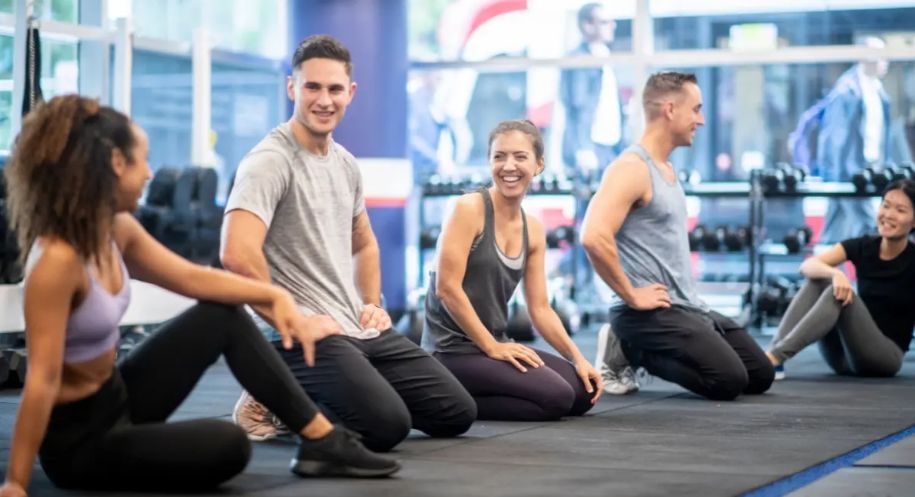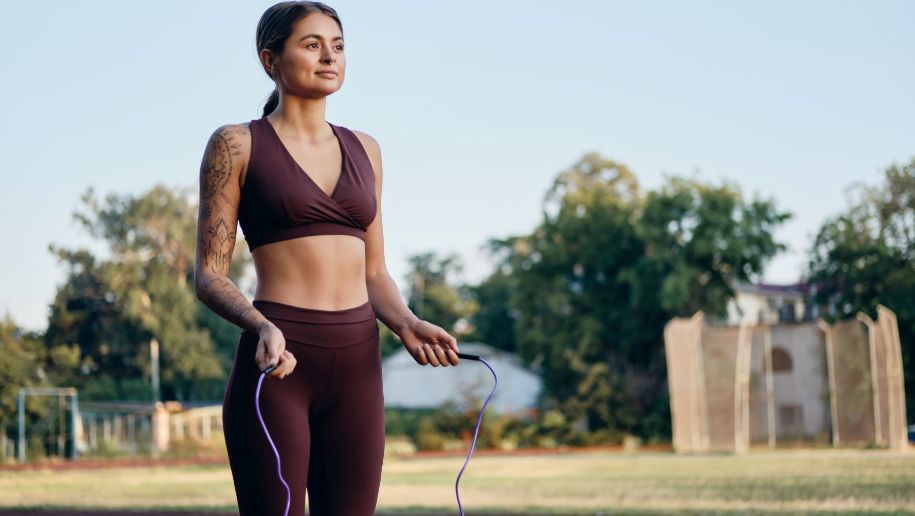Collaboration with Fitness Wear Manufacturers illuminates hidden possibilities. In this space, connections create routes to progress by integrating the expertise of different disciplines and drawing inspiration from good gym clothing brands. Fitness apparel, made with accuracy to cater to the demands of modern fitness enthusiasts, benefits immensely from these synergistic partnerships.
All these alliances based on shared objectives move the industry ever forward, defining new standards for quality and performance. The collaborative journey shows the transforming nature of cooperation in fitness wear industry.

Alliances thrive on shared aims. Fitness wear giants and fabric innovators unite, targeting peak performance. Their dialogue, rich in acronyms like MOQ (Minimum Order Quantity) and KPIs (Key Performance Indicators), orbits around user comfort and durability.
Threads interweave, forming a tapestry of collaboration, where ™Tech Fibers meet ergonomic designs. This synergy, quantified by 100+ unique product prototypes annually, underscores a relentless pursuit of excellence.
Synergy, the core of co-branding, manifests in logos and taglines seamlessly blended. The fusion of two powerhouses, say GymShark×Nike, leverages distinct market positions.
Their arsenal includes R&D insights, shared at 50+ annual expos. This partnership, a beacon of innovation, marries aesthetics with function. The result is a lineup where each piece, from compression workout leggings to moisture-wicking tees, is a testament to unified brand vision.
Dissecting market trends is paramount. Fitness wear brands deploy AI-driven analytics, scrutinizing data from 1000s of consumer feedback entries. This deep dive into preferences and pain points informs their strategy. The outcome is Apparel that addresses real-world needs, from UV protection to anti-odor tech.
Such meticulous analysis ensures offerings resonate, cementing the brand's foothold in a volatile marketplace.
Innovation is the cornerstone of design. Creators, armed with CAD (Computer-Aided Design) tools, sketch the future of fitness wear. Their canvas is Fabrics that breathe and flex, engineered for the 21st-century athlete. This commitment to novelty, supported by 3D prototyping and wear-testing, propels the industry forward. Each garment, a blend of form and function, mirrors the dynamic spirit of its wearer.
Quality is non-negotiable and paramount. Rigorous ISO 9001 compliance ensures each seam withstands the rigors of intense workouts. From tensile strength testing to colorfastness checks, no detail is too small. This meticulousness guarantees are that each piece, whether it's for yoga apparel or weightlifting, exceeds expectations. The benchmark is Zero returns due to manufacturing defects, a testament to unwavering commitment to excellence.
Efficiency defines the supply chain. JIT manufacturing process results in lean inventory with minimum waste. Strategic alliances with logistics partners facilitate timely delivery of items, including Lycra and the latter’s zippers. This simplified sequence, regulated by ERP systems (Enterprise Resource Planning), guarantees that from thread to rack every step are striving towards swiftness and eco-efficiency.
Navigating risks is crucial. Vigilance is needed whether it’s the ever-changing level of raw material prices, geopolitical tensions and how they affect shipping lanes.
Diversified sourcing and contingency planning are considered routine strategies. This proactive stance together with a live market assessment helps to protect the brand from any unavoidable disruptions. Therefore, making sure that the transition from concept to customer is never interrupted by external disorder.

Scouting allies starts with diligent research. Fitness apparel firms seek out innovators, scrutinizing portfolios for a match. They delve into production capacities, eyeing factories with 50K+ unit outputs monthly. Compatibility checks extend to CSR (Corporate Social Responsibility) values.
Ideal partners, often found via B2B networks, bring complementary strengths to the table. This groundwork lays a solid foundation for fruitful collaborations, ensuring shared visions from the get-go.
Blueprints for collaboration demand precision. The stakeholders come together, and they map out the timelines as well as deliverables. Target areas include market outreach and technology integration set every quarter. SWOT analyses chart their way, identifying opportunities and threats.
This strategic scaffold is enabled by the flexible project management tools, guarantees synchrony. These two pioneers form a pavement that provides innovations for today’s fitness aficionados.
Partnership terms are carefully forged. MOUs (Memoranda of Understanding) are the topics, outlining roles and revenue allocations. IP (intellectual property) rights are protected by the legal teams and NDAs (non-disclosure agreements) is a standard. Negotiations also include lead times, which provide the necessary flexibility in product launches. This balanced approach creates a firm cultural commitment to achievement, with clarity and equity at its center.
Harmonizing objectives is key. In the initial meetings, partners define end-user benefits with a focus on improving performance wear. Joint objectives include sustainability and innovation; set standards for material improvements. This alignment ensures that all efforts are channelled towards common goals thus establishing a sense of unity and mutual aspirations. Such cohesion is necessary in navigating the competitive terrain of fitness clothing.
Pooling resources amplifies potential. The collaborators share tech knowledge and supply chain connections to help production. The joint investments are in R&D results to pioneering materials such as the sweat-wicking fabrics. This synergy, enabled by central databases and communication channels, improves performance. It goes to show that the strength of collective knowledge is what drives industrial development.
Fluid dialogue underpins partnerships. Teams stay aligned when there are regular sync-ups, either through video calls or onsite visits. The cloud-based platforms allow for real time updates regarding the design iterations and feedback from the market. This open line critical in adapting to dynamic markets facilitates timely resolution of challenges. It exemplifies the collaborative nature, where transparency and responsiveness are critical.
Measuring success is vital. KPIs measure movement from design innovation up to market penetration. Consumer acceptance insights are provided from data analytics that influence future strategies.
Adaptability is achieved through regular reviews that measure milestones against targets. This detailed approach to performance assessment reflects a dedication towards continuous improvement and the leading, market position in fitness wear.

Visibility soars when influencers showcase fitness attire. Their platforms, with followers in the 100Ks, amplify brand reach. Posts, stories, and reels, peppered with hashtags and tags, ensure visibility.
This digital showcase, a blend of lifestyle shots and workout clips, puts apparel in the spotlight. Such exposure, invaluable for fitness wear brands, translates into broader recognition, driving interest and curiosity among potential customers.
Trust builds when influencers, revered for their fitness acumen, endorse gear. Their testimonials, grounded in personal experience, resonate deeply. Followers, seeing their fitness idols in branded wear, feel a connection. This trust, cultivated over countless posts and interactions, turns followers into potential customers. Brands gain credibility, riding on the influencer's reputation, cementing their place in the fitness community.
Diverse content keeps audiences engaged. Influencers are known for their creativity, present apparel in myriad contexts. From high-intensity workouts to relaxed yoga sessions, the range is vast. This variety, showcasing the versatility of fitness wear, caters to a broad audience spectrum. Such rich content not only entertains but also educates viewers on the multifaceted use of fitness apparel.
Influencer collaborations drive into new markets. Their international followers offer brands an opportunity, at the global arena. Strategic partnerhips focus on gender and age groups producing content for local tastes. Cultural reduction by means of this sensitive and culturally aware procedure ensures its relevancy, making the brand attractive to people from different countries.
The level of engagement also rises in influencer-driven campaigns. Interactive content like challenges and Q& A invite the participation of an audience. People who wish to imitate their idols are more enthusiastic in learning and engaging through direct feedbacks. This also nurtures an interactive community around the brand, which in turn makes people more loyal and friendly to it over again.
Matchmaking determines an appropriate influencer. Brands find celebrities that live its ethos so it touches the heart of core beliefs. However, this authenticity that is essential to credibility depends on a rigorous vetting process. Fitness wear missions resonate with influencers who are enthusiastic to fitness and well being. The real engagement and endorsement of products also creates a believable story that improves brand likability among the followers.
The freedom granted to influencers allows them for creativity. However, when influencers bring their personal flavor to this content, these collaborations are successful.
This much fanfare facilitates presenting fitness wear in an innovative manner, from workout routines to lifestyle integration. Brands, by offering guidelines, have faith that influencers are aware of what the audience wants. This trust becomes content that seems personal and touching, so the effect has been maximized.
Precision in campaigns ensures relevance. Using that knowledge about the preferences of their followers, influencers produce content tailored to niche segments.
This selective approach, whether it is to the yoga enthusiasts or hardcore bodybuilders, increases message persuasiveness. Collaboration between brands allows campaign themes to follow seasonal trends or caters for product launches, increasing reach and engagement.
Monitoring results shapes future strategies. Brands and influencers involve themselves in analytics, such as metrics of engagement or conversion. Tools and platforms provide real-time information in support of agile changes to the content or from tactics. This continual assessment based on KPIs ensures that campaigns meet their set goals and maximize ROI.
Cumulative benefits of building long-term relationships emerge. Brands develop relationships, notover the counter sales with influencers. Such sustained relationships generate deep brand association and loyalty. However, gradually influencers transform into brand ambassadors where affinity for the product is real. This long-term vision is at the basis of an ongoing engagement and ‘coevolution’ between partners that works to both their benefit.

Openness is paramount. The brands show processes of development from sourcing to production, ensuring transparency. The transparency offered through reports and social media helps in building consumer trust. Third parties conduct audits and this helps verify claims thereby confirming credibility. Such transparency, and particularly in the areas of material sourcing as well ethics in labor practices is fundamental for relationship building related to brand integrity.
Respect underpins successful partnerships. The collaborators appreciate one another’s knowledge and regard contributions. This mutual admiration reflected in joint news releases and co-branded events reinforce relations.
Respectful discussion, even when holding opposing opinions, helps create a culture of collaborative engagement. It is such a basis of respect that provides support to longer partnerships, nurturing the kind of environment where both partners should grow and learn about each other.
Consistent communication keeps stakeholders informed. Brands and collaborators update each other from design revisions to market reception. These regular updates, which are made possible through digital dashboards and meetings, keep everyone on the same page.
This cycle of updates helps maintain a pace and makes sure the projects stay relevant to strategic objectives.
Addressing conflicts promptly is key. When there are issues, an organized process involving mediation and open forums settles disagreement. This preventative approach is based on equity to ensure that minor disagreements do not escalate. Collaborative conflict resolution maintains the integrity of partnership and mutual respect.
Setting realistic expectations avoids disappointments. Guidance is provided to collaborations in the form of clear agreements that contain details about deliverables and their expected timelines.
Periodic reviews realign these expectations to the changing market conditions. With adjustment and communication made clear, these expectations remain grounded and realistic so that a positive partnership is established.
Celebrating joint achievements strengthens bonds. Collaborations celebrate successes, such as product releases and market expansions. Such recognition of collective efforts and sharing them over the platforms signifies importance of partnership. Marking such achievements with each other reinforces the partnership and helps foster ongoing collaboration efforts.
|
Criteria |
Transparency |
Mutual Respect |
Regular Updates |
Conflict Resolution |
Expectation Management |
|
Definition |
Open sharing of information and intentions |
Valuing each other's contributions and perspectives |
Frequent communication on progress and changes |
Effective strategies to address disagreements |
Aligning goals and clarifying roles |
|
Key Indicators |
Openness in communication, accessibility of information |
Acknowledgment of input, equitable treatment |
Consistent status reports, timely feedback |
Established conflict-handling protocols, swift issue resolution |
Clear objectives, realistic timelines |
|
Benefits |
Builds credibility, reduces skepticism |
Fosters collaboration, enhances team dynamics |
Keeps stakeholders informed, prevents surprises |
Maintains relationship integrity, promotes problem-solving |
Sets clear expectations, reduces misunderstandings |
|
Challenges |
Risk of over-sharing, potential information misuse |
Balancing respect with business objectives |
Information overload, maintaining engagement |
Emotional tensions, potential deadlock |
Managing diverse expectations, alignment difficulties |
|
Best Practices |
Establish clear communication guidelines, use secure sharing platforms |
Cultivate a culture of appreciation, ensure fair practices |
Schedule regular update meetings, use project management tools |
Develop a conflict resolution framework, train in negotiation skills |
Define roles and responsibilities, use SMART goals |
|
Tools & Technologies |
CRM systems, transparency portals |
Team-building activities, EQ training |
Collaboration software, email updates |
Mediation services, collaborative tools |
Project management software, expectation alignment workshops |
Table on Building and Sustaining Trust in Brand Collaborations!

The fact that post-collab sales figures have increased indicates success. Brands monitor SKU performance, observing sales spikes in units sold. POS (Point of Sale) data, when divided by months shows trends. This quantitative indicator, representing the consumer adoption rate is central. The success metrics related to particular campaigns serve as a validation of the collaborative initiative, guiding future strategies.
Taking over new territories is a sign of success. The idea behind partnerships is to open up untapped markets thus widening demographic participation. Social media analytics that are used as indicators include geographic spread of engagement. This implies that the increase in distribution points on a global scale speaks volumes of how their partnership has helped with brand footprint growth.
The rise in the brand mentions suggests increased consciousness. Monitoring tools follow mentions through the platforms to provide information on brand visibility.
Pre- and post-collaboration metrics compared show the effect. This level of awareness, essential for long-term brand equity is further increased through collaborations that promote market positioning.
Reviews and positive feedback indicate success. Quantification of satisfaction is provided by the consumer surveys, online reviews, and NPS (Net Promoter Score) assessments. This direct input from the end-user is priceless, for it informs on product development and future partnership.
The provision of positive feedback loops that act as a reinforcement to brand and product value is representative of an effective partnership.
Social initiatives, components of collaborations determine community effects. Joint CSR projects have a target of visible results. All these can be regarded as a qualitative measure of the success that includes community engagement levels, beneficiary testimonials and sustainability indices. This effect, aside from commercial profits, denotes the wider impact of collaboration towards societal welfare.
Post collaboration, rate of innovation provides evidence to progress. Annually contributed patent applications, R&D milestones reflect the collaborator’s innovation.
This measure is which signifies collective efforts toward realizing new technologies or designs gains attention to the role of partnership’s contribution towards industrial innovation.
Fitness clothing gear brands elevate market presence via strategic alliances. Collaborative efforts merge customer bases, amplifying brand visibility. Exclusive product lines, co-created, generate buzz. Social media amplifies these collaborations, driving engagement.
Key influencers play roles, endorsing products authentically. Retail events showcase collaborative collections, creating experiential buying opportunities. Data-driven strategies refine marketing, targeting ideal demographics. Customer feedback shapes future collaborations, ensuring relevance.
Platforms transform fitness wear visibility. Brands engage audiences with compelling content, driving interaction. Hashtags link conversations, broadening reach. Influencers, collaborating with brands, lend credibility. Visuals dominate, showcasing product features.
User-generated content fosters community, enhancing loyalty. Analytics guide content strategy, optimizing engagement. Social media ads, targeted precisely, boost conversions. Interactive features, like polls, gauge consumer preferences.
Co-branding merges fitness wear identities, creating unique offerings. Joint ventures tap into combined strengths, maximizing market impact. Co-branded events generate excitement, drawing crowds. Packaging, co-designed, visually communicates partnership.
Limited editions create urgency, spurring sales. Collaborative advertising campaigns leverage dual brand power. Online platforms facilitate co-branded experiences, enhancing reach. Feedback loops, integral to co-branding, inform product development.
Events offer platforms for fitness wear showcases. Sponsorships align brands with relevant lifestyles, enhancing image. On-site activations engage attendees, creating memorable experiences. Sponsorship deals include prominent logo placements, increasing visibility.
Exclusive merchandise for events drives sales. Post-event content extends the marketing lifecycle. Partnerships with event organizers amplify promotional efforts. Data captured at events informs future marketing strategies.
Digital realms host innovative fitness wear campaigns. Interactive ads engage potential customers uniquely. SEO optimizes online visibility, drawing traffic. Email marketing personalizes brand communication. E-commerce integrations make purchasing women seamless leggings.
Virtual try-ons using AR enhance online shopping. Analytics drive campaign adjustments in real-time. Social media retargeting recaptures interested users. Digital storytelling builds brand narratives, connecting with consumers.
Engagement strategies personalize brand interactions. Loyalty programs reward repeat customers, encouraging retention. Community forums foster brand-centric discussions. Customer service excellence builds trust. Personalized recommendations enhance shopping experiences.
User feedback shapes product innovation. Interactive content, like quizzes, entertains and informs. Mobile apps provide platforms for direct engagement. Events, virtual and physical, strengthen community ties.
Influencers bridge brands and audiences. Collaborations with fitness personalities lend authenticity. Content co-created with influencers resonates with followers. Product giveaway is hosted by influencers, drive engagement. Influencer-led tutorials demonstrate product usage.
Behind-the-scenes content with influencers humanizes brands. Affiliate programs incentivize influencer-led sales. Strategic influencer partnerships target niche segments. Influencer feedback contributes to product development.
A. Collaborations open up fitness wear brands to a wider audience. The partnerships merge disparate customer bases, increasing visibility. Exclusive lines that are co-designed interest the market.
Multiple platform cross-promotion strategies allow for message amplification. Joint effort facilitates the creation of unique products which addresses consumer needs. Promoting partnerships with influencers and events helps to build brand reputation, thus increasing the sales rate.
A. Mutual alignment in the brand values and reliability are essential for successful influencer partnerships. Brands presence is amplified by influencers with large engaged audiences in the fitness space.
Binding, balanced agreements establish commitments. Creative freedom guarantees influencers make relatable content. The constant communication leads to the alignment and flexibility.
Performance tracking measures consider the effect, which determines future partnerships. By using influencers for authentic storytelling, the brand connects with individuals who are more likely to develop loyalty.
A. A sale metrics is demonstrates the success of collaboration through sales, market penetration rates and customer feedbacks. Social media engagement statistics provide insights into brand visibility and interaction metrics. Calculations of ROI in joint venture focus on financial results.
Collaboration efforts are reflected in product innovation and diversification as market response. For durable success, long-term brand partnerships as well as repeat collaborations are the indicators of mutual benefit.
A. When effective marketing strategies for collaborations are discussed, these involve tailored social media campaigns and use of both parties’ platforms. By partnering with influencers, reach is magnified and enhanced credibility. Exclusive launch parties create excitement and buzz.
The consumer connection is improved by co-branded content storytelling. Strategy modifications are dictated by data-based insights for optimal results. After the collaboration, ROI assessment implies future marketing practices.
The combined efforts of brand and Fitness Wear Manufacturers in the projects are paving a way forward innovation to market growth. The synergy not only multiplies product variety but also enhances the brand’s reputation. It is not a secret to anyone that the intensity of collaboration matters enormously when we are striving for pushing boundaries in the field of fitness apparels.
If you are prepared to begin this process, go to SANSASPORTS where collaborating with SANSANSPORTS will help your brand explore its fitness wear possibilities in the world today and tomorrow.
